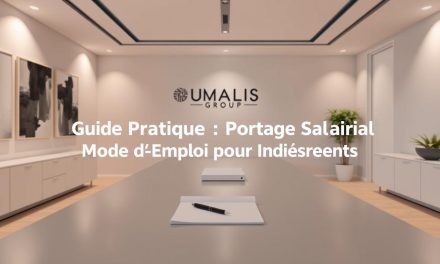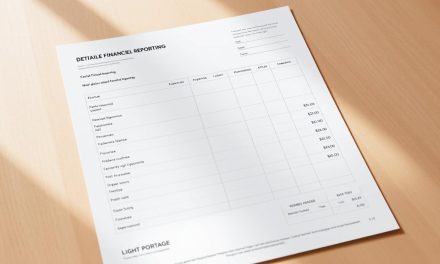This article opens a practical guide to making work more meaningful and flexible. Many roles now blend design, tech, and storytelling so people can create something new while earning a living.
Creative pathways span graphic design, UX, software, marketing, and writing. These fields offer clear benefits: freedom, flexibility, and self-expression. Average U.S. salaries vary widely, from marketing roles around $49,750 to engineers near $118,164, and many positions show steady growth.
We’ll show real role snapshots and day-to-day routines so you can evaluate fit. Expect practical steps to test ideas, build proof, and map a career plan without unnecessary risk.
Ethical use of GenAI is part of modern workflows; programs like the University of Michigan’s AI for Creative Work Specialization teach tools and responsible practices.
Table of Contents
Key Takeaways
- Creative work can increase satisfaction through freedom and self-expression.
- Many industries let you design your path, from graphic design to software roles.
- Practical testing and evidence-building matter more than ideas alone.
- Plan finances and timelines; creative growth often needs buffers.
- Use AI and platforms ethically to speed routine tasks and free higher-value time.
What Is Job Creativity and Why It Matters Today
Creative roles show up in surprising places, from software teams to school classrooms. These positions ask people to create something new or apply inventive thinking to solve problems. That makes them central to modern business and public services across France and beyond.
Defining creative work across industries
Creative work covers many kinds of tasks: web and tech development, writing and art, marketing, teaching, and product design. Some roles focus on producing visible art and design. Others embed original ideas into research, strategy, or product improvement.
Core benefits: freedom, flexibility, and self-expression
The main benefits are plain. You often get more freedom in how you approach tasks, flexibility about when and where you work, and a clearer line to self-expression.
Creative people blend knowledge, curiosity, and collaboration. Ethical GenAI can speed ideation, but domain experience and taste still guide outcomes. In short, this way of working adds measurable value to careers and to business results.
Buyer’s Guide Overview: How to Use This Guide for a Creative Career
This article is a practical roadmap you can use to move from idea to steady work. Skim first to set clear goals, then return to sections on choosing roles, testing ideas, and building income as you progress.
Start by naming what you want from your career: more autonomy, better alignment with values, or a path to lead. Let those goals guide the ways you test roles and opportunities.
Plan simple checkpoints. Revisit assumptions monthly, track what works, and iterate the process based on evidence rather than guesswork.
- If you’re searching for jobs: use role and day-to-day sections to spot where you can deliver results fast.
- If you’re exploring business routes: focus on money matters and build a buffer for a realistic runway.

Treat this guide like a toolkit: run small sprints, keep notes and feedback from peers or early clients, and double down on what moves you measurably closer to your goals.
job creativity
Many professionals now blend original thinking into standard tasks, so roles can become more inventive without changing titles.
Creative career paths produce visible outputs, like campaigns, illustrations, or interfaces. But bringing fresh ideas into any role is often about using skills and knowledge to solve real problems.
The practical difference
“Creative jobs” are built around making things you can show. By contrast, applying creative work in other positions means rethinking processes, simplifying complexity, or improving team rituals.
How to make impact where you are
Focus on research, synthesis, and storytelling that tie design or ideas to clear outcomes. Creative people often bridge functions and turn constraints into workable concepts.
- Sample day-to-day tasks to decide if you prefer making artifacts or shaping environments.
- Seek roles with room for experimentation so your input affects priorities, not just polish.
- Build a portfolio that shows before/after results and metrics, even for non-design work.
If you’re planning a career pivot, test small bets first. That reduces risk and helps you see whether you want a title change or to bring new practices into your current job.
Top Creative Career Paths to Consider Right Now
Here are clear pathways where design, media, and tech meet real market demand. Each track lists typical roles, entry routes, and notable salary and growth signals so you can compare options quickly.

Design and media
Graphic design, motion design, animation, and video editor ship product-ready visuals under briefs and deadlines. Glassdoor averages range from graphic design (~$67,745) to animator (~$71,876).
Digital and tech
Web developer, UX designer, and software engineer blend creative problem solving with development. Salaries are strong: web developer ~$82,427, UX ~$83,858, and software engineer ~$118,164 with solid growth projections.
Marketing and content
Digital marketer, copywriter, technical writer, and social media marketer turn ideas into measurable outcomes. Expect mid-range pay (digital marketer ~$69,597; social media ~$49,750) and steady demand.
Arts and education
Art teacher, writer, creative director, and copy director combine teaching, strategy, and leadership. Many paths accept a bachelor degree or portfolio-first routes. Check bureau labor statistics and local labor statistics for France-specific guidance.
- Entry types: portfolio-first for many design and writing roles; degree or school background helps for education and architecture.
- Match your passion and experience to fit: choose product-focused development or audience-focused marketing based on what you enjoy.
How to Choose a Creative Role That Fits Your Goals
A good fit comes from aligning your preferred process with real team rhythms. Start by naming your main goals: autonomy, impact, or steady hours. That clarity directs which role and environment will suit you.
Match your “why” with requirements and environment
Read postings to note core work tasks and success metrics. Talk with people doing the role to confirm daily pace, collaboration level, and feedback loops.
Portfolio signals, degree pathways, and transferable skills
Build a portfolio that shows process: constraints, before/after, and outcomes. A bachelor degree helps in some fields, but projects, internships, and short courses often substitute.
- Inventory relevant skills like communication and project management and link them to the role.
- Decide your preferred process: solo making, client-facing work, or leading teams.
- Check fit with team size, feedback culture, and whether the company values experimentation.
Use small trials or internships to gain experience and validate fit before a full career move.
Skills That Power Creative Work
Practical skills bridge bold ideas and reliable delivery in modern design and marketing environments. Employers expect clear communication, sharp problem solving, and user-focused choices. These help teams move from concept to product quickly.

Creative fundamentals
Design and storytelling matter. Learn to frame problems, build concepts, and turn those concepts into visible artifacts like layouts or copy.
Strong writing makes graphic design and visual choices persuasive. It helps stakeholders see why a solution will work for people.
Business and collaboration
Business fluency connects creative work to marketing goals, budgets, and timelines. That trust wins higher-visibility tasks.
Collaboration skills keep momentum when priorities shift. Invite feedback early, document lessons, and separate self-worth from edits.
- Practice with real briefs to build confidence shipping a product, not just polishing ideas.
- Pair core design skills with analytics or presentation to widen your role on product teams.
| Skill area | Why it matters | Quick action |
|---|---|---|
| Framing & concepting | Keeps work focused on measurable outcomes | Draft a one-paragraph brief for each idea |
| Writing & storytelling | Aligns stakeholders and users | Write a short rationale for designs |
| Business & marketing | Ties creative choices to budget and reach | Map one KPI to every project |
| Collaboration & feedback | Speeds iteration and improves trust | Run a 15-minute review early in every sprint |
Education, Courses, and Credentials to Build Your Edge
Structured study can build a durable foundation, while targeted classes sharpen skills for real projects. A bachelor degree in design, English, or marketing gives core knowledge, access to internships, and school projects that become portfolio pieces.
If you’re early in your path, a full degree helps with networks and steady development. Many employers still list a bachelor degree as a preferred credential in media and related roles.
Mid-career professionals benefit from short courses and specializations. Platforms like Coursera host practical modules for UX, digital marketing, and media production that fit around work.
Practical tips
- Pair learning with projects: finish scoped pieces that show measurable outcomes.
- Use course communities: peer reviews and mentorship speed skill growth and prevent common mistakes.
- Focus on AI responsibly: consider the University of Michigan’s AI for Creative Work Specialization to learn tools and ethical guardrails.
- Refresh your portfolio: replace class assignments with client work or collaborations quickly.
| Path | Best for | Time to complete | Key outcome |
|---|---|---|---|
| Bachelor degree (Design / English / Marketing) | Early career starters | 3–4 years | Core knowledge, internships, alumni network |
| Short specializations (UX, marketing) | Skill upgrades, career pivots | 4–12 weeks | Role-ready project pieces |
| AI-focused programs | Researchers & makers using tools | 4–10 weeks | Ethical AI use, faster ideation |
Plan study around your work and set development milestones. Track role requirements and consult local bureau labor statistics for France to align learning with demand. For certification options designed for freelancers and flexible professionals, see certification programs for freelancers.
Real-World Roles: What the Day-to-Day Actually Looks Like
Daily routines in creative positions mix strategy, hands-on making, and people management in ways that matter.

From strategy to mentorship
Assistant Creative Director Kevin Frost oversees designers, mentors talent, and keeps reviews on track. He spends mornings on strategy and afternoons on one-on-one feedback.
Copy Director Carley Barton manages a team yet still writes. She sets voice guidelines, vets messaging, and aligns projects to mission and audience.
Hands-on creation
Motion Designer Jon Christenson blends graphic design with video editing. His background in TV packages, including the Tokyo Olympics, helps on tight promo schedules.
Video Editor Julia Steer focuses on social content and commercials. She works closely with producers and designers to shape stories from raw footage.
Graphic designers juggle print and digital briefs, iterate assets, and coordinate with marketing and stakeholders to meet brand and accessibility standards.
| Position | Typical day | Entry |
|---|---|---|
| Creative Director | Strategy, reviews, mentoring | Bachelor degree or portfolio + years experience |
| Motion Designer | Animation, editing, team reviews | Graphic design background; demo reels |
| Video Editor | Assembly, tightening cuts, delivery | Internships, broadcast experience |
| Graphic Designer | Layouts, asset delivery, stakeholder calls | School portfolio or bachelor degree english/design |
Day-to-day success relies on quick feedback loops, prioritization, and clear communication with people across functions. Small projects and steady outcomes build scope and influence over time.
Testing the Waters: Explore, Reflect, and Build
Small, real-world trials reveal more about fit than long plans ever will. Break change into three clear steps so each experiment delivers useful evidence.
Exploring: trial projects, lost hobbies, and small bets
Start with short projects and rediscovered hobbies to validate your passion. Treat each mini-project as data: scope it, set a deadline, and measure outcomes.
Reflecting: hobby or new career—use the “holiday resort” test
Ask yourself whether you would keep going when work feels empty or hard. The “holiday resort” test from Careershifters helps you see if a path is sustainable.
Building: side gigs, part-time pivots, and freelance pilots
Protect practice time—20 minutes daily adds up. Start with side gigs that prove concepts and bring small income before shifting to part-time or freelance.
| Stage | Action | Simple outcome |
|---|---|---|
| Explore | Run 1–2 week pilot projects | Early feedback and interest signal |
| Reflect | Apply “holiday resort” test | Decide hobby vs. career |
| Build | Launch low-risk side gigs | Proof, income, and portfolio pieces |
Keep expectations realistic: iterate offers and rates, ask people for feedback early, and document projects as short case studies. Small, steady steps beat occasional sprints.
Money Matters: Planning a Stable Creative Income
Before reducing hours, treat income planning like a small business experiment. That mindset helps you map buffers, set realistic targets, and test demand without jeopardizing essentials.
Start with a worst-case buffer. One Careershifters example saved a full year assuming zero bookings. That kind of runway lets you pilot offers and keep a back-up plan if markets shift.
Buffers, targets, and worst-case budgeting
Build a savings buffer tied to real expenses and set income targets by counting projects or product sales needed to cover costs.
- Size the buffer to cover 6–12 months of essential spending.
- Set a concrete target number of client engagements or product units needed each month.
- Automate tax set-asides and keep a lean expense baseline for variable income.
Negotiating time: four-day weeks and phased shifts
Negotiate creative time at your employer to test demand. One shifter arranged a four-day week to try photography while keeping a secure position and income.
Use phased shifts: reduce hours gradually, track marketing inputs versus revenue, and run short development sprints to raise rates or launch a product.
| Risk | Mitigation | Metric |
|---|---|---|
| Zero bookings | One-year buffer, pre-book clients | Months of runway |
| Uneven income | Retain part-time role, diversify offers | Average monthly revenue |
| Slow growth | Focused marketing, development sprints | Conversion rate from outreach |
Do a simple risk assessment that lists likely risks, their probability, and mitigation steps. Track marketing activities—outreach, referrals, content—against revenue to spot high-leverage work.
Finally, only invest in a bachelor degree or certification if it clearly improves pricing power or opens a measurable position in your niche. Use local bureau labor statistics to check demand and align your plan with France-specific labor statistics when possible.
Tools and Trends: AI, Social Media, and Your Portfolio
Small tools and smart habits now shape how you present work and reach an audience. Use tech to speed routine tasks, then add human judgment to keep results original and on-brand.
Using GenAI ethically to streamline creative processes
Use AI as a co-pilot for research, ideation, and first drafts, but review outputs for originality and brand safety. The University of Michigan’s AI for Creative Work Specialization teaches popular tools and ethical guardrails that are useful for product and design teams.
Showcasing projects on websites and media platforms
Build a living portfolio that highlights projects with clear outcomes and short case notes. Treat it like a product: easy navigation, fast load times, and the most relevant work first.
- Pick social media platforms where your audience spends time and share process clips or product mockups.
- Create a lightweight content calendar to publish projects and behind-the-scenes posts often.
- Take short courses to add new skills quickly and reflect them in updated portfolio pieces.
- Collaborate on joint projects to show teamwork and business impact.
For a practical guide to building an effective site, see this resource on online portfolio creation.
Action Plan: Your Next Steps Toward a Creative Career
Turn plans into short, measurable steps that build evidence and confidence. Start with a one-paragraph mission that states what you want from a creative career and why it matters in your local market in France.
Clarify your mission, map options, and commit to consistent practice
List three roles that match your mission and pick one to explore for 30 days. Define a single project and one clear outcome to test fit.
Block practice time weekly and set simple deliverables. Treat each session as data: what you learned, what took too long, and what helped results.
Find mentors, collect feedback, and iterate your portfolio
Recruit two mentors: one practitioner and one manager-level reviewer. Ask them to critique a project and advise on positioning.
Update your portfolio monthly: drop weaker pieces, add one stronger case study, and highlight tools, collaboration moments, and measurable outcomes.
- Keep an ideas list and test one idea per month.
- Track basic KPIs—applications sent, pitches booked, projects shipped—and review them biweekly.
- Treat this as a small business: use risk assessment and phased shifts to protect income while you build experience.
Conclusion
This article gives a practical roadmap to turn experiments into lasting outcomes.
Pick one small project, ship it, and measure what changes. Use portfolio storytelling and ethical GenAI to speed work, then test assumptions with local labor statistics and Glassdoor data for demand in France.
Creative people thrive when practice, honest feedback, and business metrics meet. Whether you pursue the arts, a bachelor degree, or ladder through projects, steady action compounds.
Market needs vary by role, but clear evidence, reliable delivery, and good communication win more jobs than credentials alone. Revisit this guide monthly and keep a strong, steady habit toward the next step in your career.
FAQ
What does "Job Creativity" mean and who can benefit?
Job creativity means using original thinking and artistic skill inside any role — whether you work in marketing, software, education, or design. It benefits professionals who want more freedom, better problem solving, and a chance to shape work that feels meaningful.
How does creative work differ across industries?
Creative work looks different in each field. In graphic design or motion design you focus on visual storytelling. In product or software roles you design user experiences. In marketing and writing you craft messages that persuade. The core is the same: solving problems with fresh ideas and clear communication.
Can I add creativity to a non-creative role?
Absolutely. Any position can become more inventive by bringing user-focused thinking, better storytelling, visual clarity, or process experiments. Small changes — a redesigned report, clearer internal docs, or a new social format — can make big differences.
What are realistic career paths for people who like creative work?
Common routes include graphic design, motion design, animation, video editing, UX and web development, digital marketing, copywriting, technical writing, and roles in arts education or creative leadership like creative director. Many people also blend freelancing with salaried work.
Do I need a degree to enter a creative field?
Degrees help, especially in design, English, or marketing, but portfolios and demonstrable skills often matter more. Short courses, certificates, and hands-on projects can fast-track learning, especially for web, UX, and GenAI-enabled roles.
How should I build a portfolio that gets noticed?
Focus on a few strong projects that show process, outcomes, and your role. Include case studies, before-and-after visuals, metrics when possible, and links to live work. Host work on your own website and on platforms like Behance or Dribbble for design, and GitHub or CodePen for developers.
What skills are most valuable for sustained success?
Blend core creative skills — design, storytelling, visual communication, and writing — with business skills like marketing, client communication, budgeting, and collaboration. Learning to use tools such as Adobe Creative Cloud, Figma, or basic HTML/CSS adds immediate value.
How can I test a creative career without quitting my current role?
Start with trial projects and side gigs. Take short freelance jobs, build passion projects, or volunteer for creative tasks at work. Small, consistent experiments help you learn the market and build a portfolio without risking financial stability.
What are realistic income strategies for creative professionals?
Combine steady income with diversified streams: salaried roles, freelance clients, passive products (templates, courses), and royalties. Maintain an emergency buffer, set income targets, and negotiate phased transitions if moving to part-time or freelancing full-time.
How should I use GenAI and other tools ethically in creative work?
Use GenAI to speed ideation, drafts, and repetitive tasks, but always review, edit, and add your original perspective. Credit sources when required, respect copyright, and avoid relying on AI for final creative judgments or client deliverables without human oversight.
What role does networking and mentorship play?
Mentors accelerate growth by giving feedback, industry context, and introductions. Networking helps you find gigs, collaborators, and hiring opportunities. Join local meetups, online communities, and professional groups related to design, marketing, and media.
Which platforms should I use to showcase and promote my work?
Use a personal website as the primary hub, then share select pieces on LinkedIn, Behance, Dribbble, Instagram (for visuals), YouTube or Vimeo (for video), and relevant niche forums. Tailor content to each platform’s audience and format.
How long does it take to pivot into a creative role?
Timelines vary. With focused learning, small projects, and networking, some people land entry-level roles or freelance clients in 3–9 months. Building a strong mid-level portfolio often takes 1–2 years of consistent practice and iterations.
What metrics should I track to measure progress?
Track project completions, client or hiring leads, portfolio views, conversion rates from proposals, income growth, and qualitative feedback from mentors or clients. These signals tell you what to improve and where to invest time.
Are creative careers stable in today’s market?
Creative roles remain in demand, especially where digital experience, UX, content strategy, and marketing intersect. Staying current with tools, trends, and business outcomes increases resilience and long-term employability.





